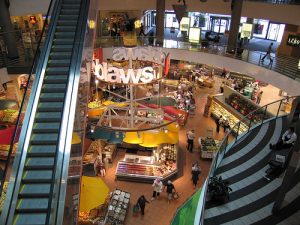 August 2019
August 2019
Many condo corporations struggle with how to turn their building into a neighbourhood. The lobby space tends not to be given sufficient consideration.
Lessons can be learned from commercial buildings that are making better use of their lobby space.
Much like large office building lobbies, the traditional condo lobby is underutilized. It typically includes a concierge desk and a large space designed to convey an impression to residents and visitors. It may include furniture, artwork and plants. Hundreds of people pass by each day. Some stop to check mail. Few stop to socialize. This area of a building is rarely considered as an amenity and, as such, tends to be forgotten despite receiving more pedestrian traffic than any other area.
The lobby area of many buildings is a large open space with great potential. It is a space where people can hang out, have a coffee and socialize. It can be a popular area for people to gather throughout the day. If the intent is to turn a condo building into a neighbourhood, it begins in the lobby. In this condo communities can learn from others.
More communities are viewing better utilization of the lobby as a missed opportunity and are putting more thought toward how this space can be better utilized.
Picking up dinner or doing food shopping without having to leave home is appealing to many. The same applies to eating out or having a coffee and reading. This is where common areas can serve as a true extension of the home. These spaces take on greater importance for those who reside in smaller suites.
Some communities seek a high profile anchor tenant such as a supermarket or Starbucks popular with both buyers and renters. Such businesses benefit from easy access by those in the building and easy street access. They become popular amenities not financially supported through condo fees. The corporation may charge a fee for renting out this space.
The YMCA has turned part of its lobby into an exercise area with popular exercise equipment. Office buildings not only include retail space for food establishments but have extended seating areas into the lobby. Both approaches can make sense for condo communities. The sale of prepared foods and food staples offers a practical approach to providing a desirable service to residents.
LCBO, Loblaws, Starbucks, Longos and Metro have all been anchor tenants located in central areas of high-rise residential and commercial buildings. Smaller businesses including furniture stores, hair salons and independent restaurants have also found success with this approach. A current project may soon include a public library.
Turning a community into a neighbourhood takes more than periodic events and amenities. It requires a central space where people come to socialize, converse and congregate.



